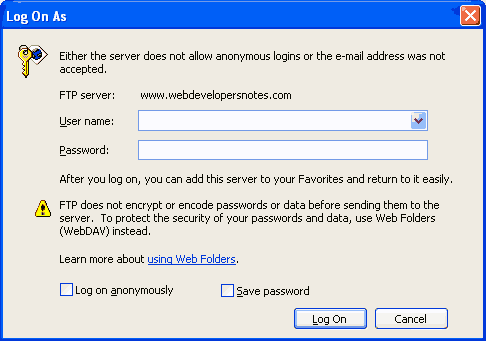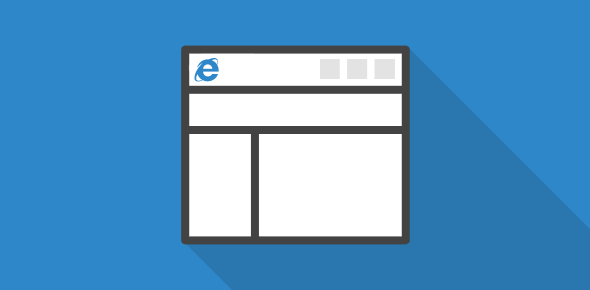This article will discuss how you can employ Internet Explorer as a FTP client or FTP software. Since you would already be familiar with this neat browser, it is not a difficult task to set it up as an FTP client.
What you need to use Internet Explorer as an FTP client
If you want to connect to your web hosting server using FTP with Internet Explorer, you need the following information:
- The username (sometimes also called user ID) of your FTP account
- The password of your FTP account
- The hostname or address of your FTP account (also known as the server address)
You can find the above information in the email you have received from your web hosting company.
Sponsored Links
FTP with Internet Explorer
Open a new Internet Explorer window. And type in the following in the Address field and hit the Enter key.
ftp://YOUR-FTP-OR-SERVER-ADDRESS
Note: Instead of http:// we are using ftp://. Substitute YOUR-FTP-OR-SERVER-ADDRESS with the actual address of your web hosting server.
A dialog box pops up (refer image below) asking you the login details (username and password) of your server. Enter these and you would be connected to your web site hosting account.

Before the dialog box is displayed, you might get an error saying that you don’t have permission to access this server, in which case, you need to follow the steps below.
Since our browser does not display the login box, we need a way around it. What we will do now is to append the login details to the FTP address and try to login once again. You need to type the following in the browser Address field.
ftp://USERNAME:PASSWORD@YOUR-FTP-OR-SERVER-ADDRESS
Remember to put a colon (:) between your username and password and add an “at” sign (@) followed by the server address. Since the username and password would be visible to prying eyes, this method is less secure but works. Any way, the username and password are not displayed once you connect successfully to your web hosting account.
Lastly, click on the “Folders” button on the top to get a display of the folders on your computer and on the web server. Internet Explorer is now ready to act as an FTP client!
You can now copy or move files from your computer to the web host, delete files, rename files, change permissions etc. on the web server just as you would on your local computer. Ain’t that cool?
Getting the Internet Explorer web browser to act like an FTP client it a neat thing. However, it has certain drawbacks. Since there is no log file maintained you can lose track of which files had been uploaded and which were in queue if you get disconnected for some reason. Internet Explorer is definitely slower than an FTP client when transferring files. The browser might also crash if you have put a lot of files for uploading or downloading (but this hasn’t happened to me when I was testing).
The final verdict is you can use Internet Explorer as FTP software if you need to transfer a few small-sized files. However, if you maintain web sites for a living, I would recommend a dedicated FTP client and you can refer to the list of FTP clients for more information.






